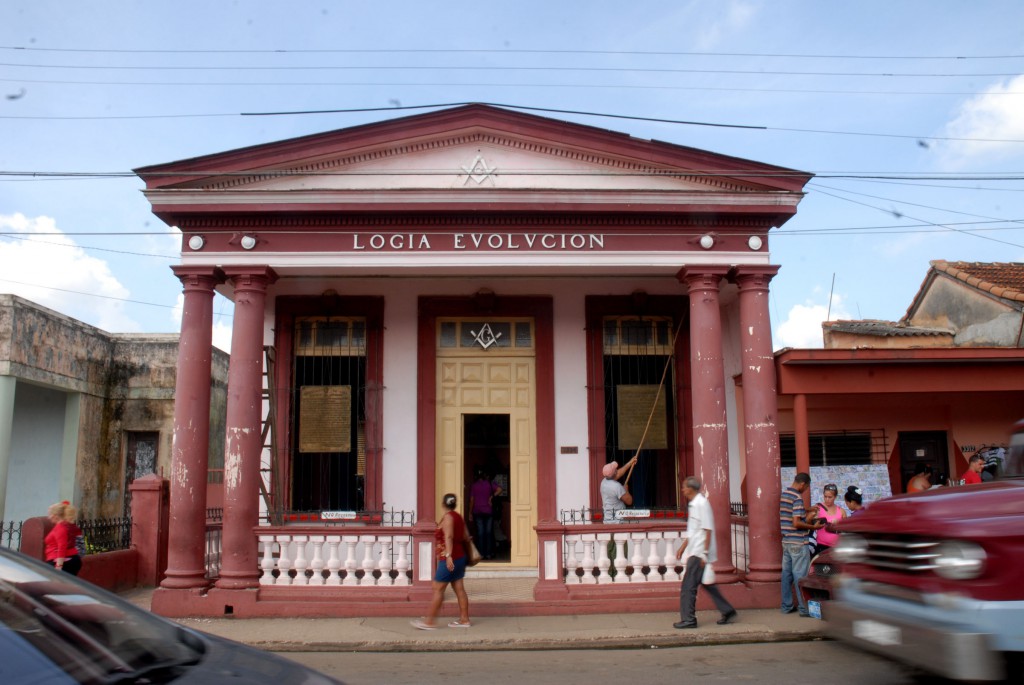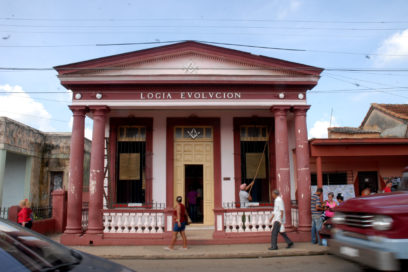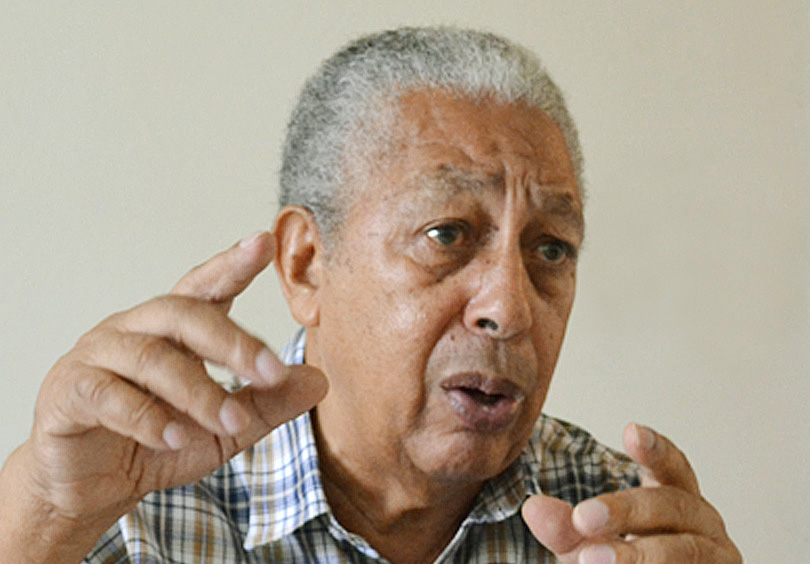
By Felipa Suarez and Maria de las Nieves Gala
The starts announced the arrival of the night when those Young men to participate in the meeting to be held at the Evolution Lodge in Artemisa arrived. They will become witnesses of a special meeting. Ramon Pez Ferro was the first to arrive as usual and prepared conditions to receive the distinguished visitor.
Jose (Pepe) Suarez had informed about it, because by 1952-53, Pez Ferro was the Guide Prefect of the Hope Fraternity Young Association (AJEF) and was its representative in front of the lodge, so he had the key of this facility.
“Members of the central cell were called by Pepe,” Ferro said; we did not know what it was about. As I had to prepare conditions, he told me.
“We suggested the meeting should be held in the Masonic Temple, where we used to meet either for Freemasonry or the AJEF; we did not use it for the usual ones; those were in the living room of the temple, so they could seem to be natural reunions.
“When Fidel arrived, we turned off all the lights and we only left the one from the Masonic altar (a triangular little table with three little bulbs, one in each corner). Fidel was together with Pastorita Nuñez. I do not remember if there was someone else. It was about nine at night of a day by the end of 1952 that no one can say the exact day.”
Pez Ferro prodigiously remembers today, living in a centric building in Vedado, the historical event when more than 61 years have passed by. He looks back to the history of the brave Young men from Artemisa who participated in the attacks to Moncada and Carlos Manuel de Cespedes garrisons.
On March 10, 1952 with General Fulgencio Batista’s coup, Pez Ferro was 17 years old and a student of 4th grade at the Second Teaching Institute from Artemisa.
At the beginning, he used to travel from Candelaria where he lived, until his father decided to move to Artemisa to help his sons’ studies. As a coincidence, they settled in La Matilde locality, a place registered as a neighborhood of heroes.
“We lived three houses far from Ramiro Valdes; Ciro Redondo and Julio Diaz. In front of my house there were Rosendo Menendez, Ramiro’s cousin, and Santana’s workshop.
“Pepe Suarez, who also lived near there, knew we had clear attitude and position in relation to Batista and he got in touch with us. So the first members of the cell were from La Matilde. For me, it was a proposal that had to do with my way thinking and behaving,” he said.
By then, Pez Ferro was an activist of the president from Orthodox Youth in Artemisa, besides the leader of the Students’ Association.
“From the first day of the coup we highlighted in the struggle against Batista: we participated in many manifestations, meetings to repudiate the coup and strikes in the Institute.”
The young Masonic leader by then remembers that boys from 16 to 21 years old were the ones to register. They were not Masonic but they were “inducing them the Masonic ideas, and when that time ended in AJEF, if they wanted they could start in the fraternity.”
Sometimes, Pez Ferro invited partners to study there, “because I used to get in and out from that place as member. That is why I could prepare that place for the meeting with Fidel.”
It was precisely that place where the members of the central cell movement used to meet, leaded by Pepe Suarez. “About nine or ten comrades were the members of this movement. Among them Ciro Redondo, Ramiro Valdes, Julio Diaz, Vero Rosello…
“The movement was organized in cells, each of the members of the central had at the same time, one that had nothing to do the other partners. There was a close system of compartmentalization. In my cell there were not many: Guillermo Granados, Fidel Labrador and Ramon Callao, among others.”
We took precautions at the lodge. They tried to be brief, making no noises to prevent problems. Fortunately, none of the leaders came to the meetings, which were time by time, always after eight at night.
Fruitful meetings
All along the preparations during the three last months in 1952, and the first six months in 1953, the main leaders of the movement in Artemisa had meetings with Fidel and Abel Santamaria.
Pez Ferro had his first contact with Santamaria:
“The interview was at 109 Prado Street. Santamaria explained us of the goal, the purpose of the movement. He emphasized it was not only the need to change the regime of the dictatorship, but also to eradicate the corrupt and submissive character, not only from Batista’s government, but also the ones before.
The goal was to establish a new government that will change the Cuban society and will offer a real benefit to the people.
“I remember that during the commemoration of Jose Marti’s centenary, one of the institute’s teacher organized what it was called Marti’s Seminar that was an extracurricular subject and those interested attended: I was one of them.
“There was even a radio station in Artemisa and among the students who were more interested on Marti, used to organize a radio program; although it was true we lack political experience, but we were patriots.
“As I was in charge to propaganda in the Orthodox Youth; I knew that was clear for the Cuban public opinion was that the Orthodox Party will win elections.
We believed we will be able to establish a better government, so we were all hopeful, and the coup put an end to it.”
With Fidel at the lodge
“I met Fidel at Pepe Suarez’ house who introduce us after a visit to Pinar del Rio province.
“I had a pleasant impression; Fidel is a charismatic person. He greeted me with great affection. He expressed his satisfaction with all done in Artemisa; encourage us and said: “We should keep on getting ready, deepen in trainings. I will leave. That impression, the first meeting with Fidel, I keep it really present too,” he remembered.
Pez Ferro and the rest of the comrades were really conscious how careful they had to be in the meeting to be held at the lodge with Fidel, who was well known by then. He had already highlighted in his denounces to Carlos Prio’s government and the appealing he presented to the Supreme Court against the coup d’état.
In the limited light of the Masonic altar, the future attacking members listened to their leader. Fidel, after he reaffirmed his satisfaction with the preparations in Artemisa and the entire country said they should be ready for the decisive moment.
“He repeated the goals of the movement, its political-ideological character and the political ideas to put into practice.
“He ratified his trust in us and stressed it was a simply volunteer decision to participate and he hoped they will be firm forever. The comrades asked some questions, I do not remember them and he clarified them. It was a brief meeting.”
So many years later, he asserts no one was really clear all what Fidel said by then; because they did not write a word. “I do remember the topics he talked about, because they touch us deep inside.
“Our last contact with Fidel was few days before the action, at Santamaria’s house, where he asserted the movement had advanced a lot and things were going well and he flattered us, because he could see the movement in Artemisa was well organized. He noted was satisfied with we had done. He told us to be ready because there will be a greater training soon, which will last two or three days. They will inform us, and we should create conditions at home to avoid any situation that could damage the tact we had had so far.
By that time, the boys from Artemisa who used as main place for conspiracy the Evolution Lodge, “although it was not the only facility”, were ready to offer their lives to defeat tyrant Fulgencio Batista.




The Jewelry Store
Nice article, It was funny.